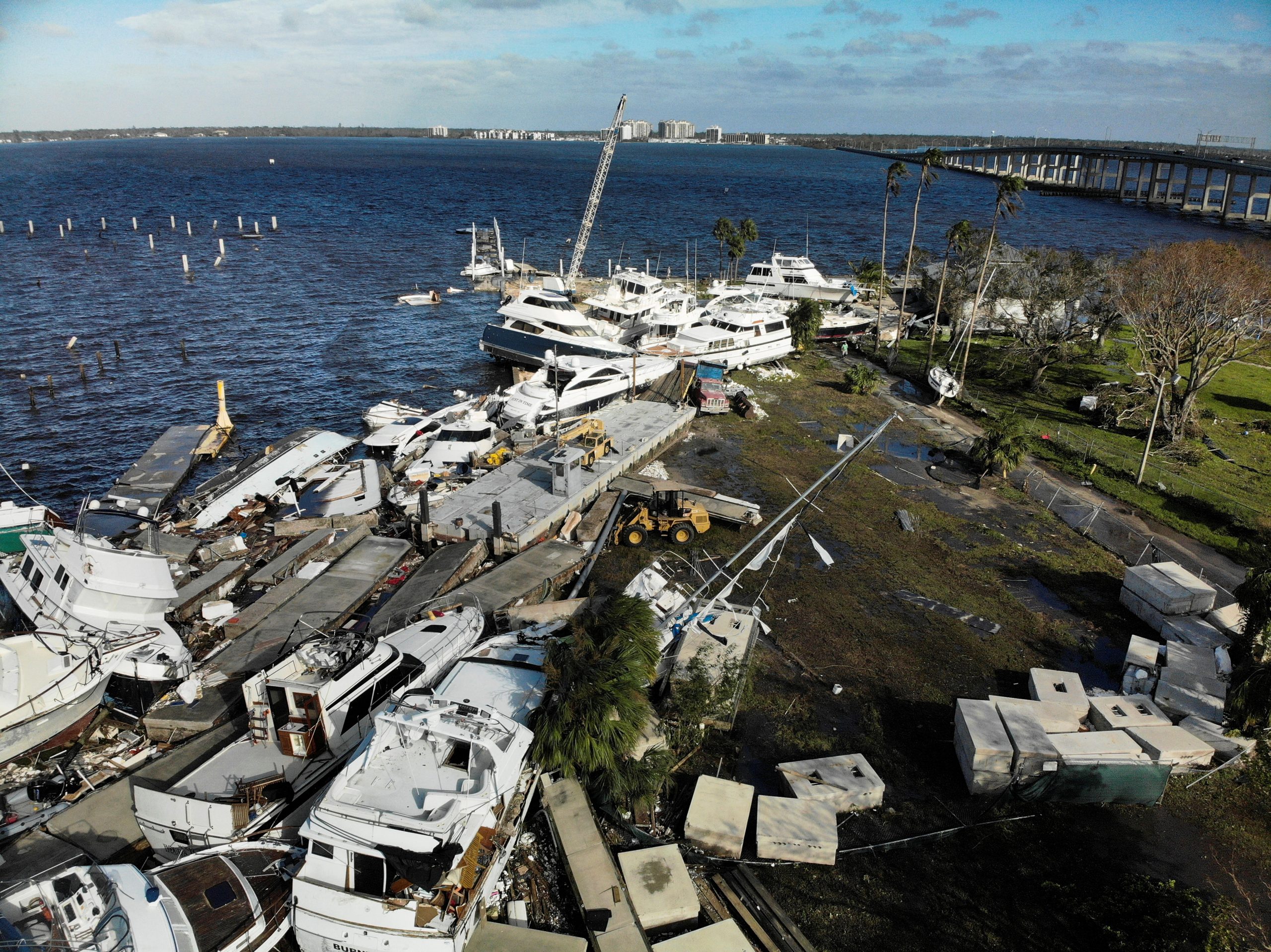
[elfsight_social_share_buttons id=”1″]
Tropical Storm Ian is expected to become a hurricane again later on Thursday before making landfall for the second time on Friday, the U.S. National Hurricane Center said, issuing a hurricane warning for the entire coast of South Carolina.
Ian was located about 285 miles south of Charleston, South Carolina, packing maximum sustained winds of 70 miles per hour, the Miami-based forecaster said.
Ian, one of the mightiest storms to hit the U.S. mainland in recent years, flooded communities and left more than two million homes and businesses without power as it battered Florida’s Gulf Coast with howling winds, torrential rains, and raging surf.
By Thursday morning, Ian had weakened into a tropical storm and was trekking across Florida, leaving Gulf Coast residents to pick up the pieces.
But it was still expected to produce strong winds, heavy rains, and storm surges across portions of Florida, Georgia, and the Carolinas, the U.S. National Hurricane Center said.
The storm, packing maximum sustained winds of 65 mph was about 35 miles southwest of Cape Canaveral, the Miami-based forecaster said.
Ian blasted ashore on Wednesday afternoon as a Category 4 hurricane with maximum sustained winds of 150 miles per hour. It quickly turned the region’s flat, low-lying landscape into a scene of devastation.
Roiling seawaters swept into waterfront homes in Naples, Fort Myers, and other towns and cities. Firefighters waded through chest-high waters to rescue people, including one woman in Naples who was stranded in her car.
Naples Fire Rescue posts a video of them rescuing someone from a stranded car in waist-high flood water during Hurricane Ian. (via Instagram) pic.twitter.com/ikv2fweSmh
— Martin Vassolo (@martindvassolo) September 29, 2022
In Venice and elsewhere, downed trees and power lines littered roadways, roofs were ripped off homes, and water poured into neighborhoods. Boats at their moorings were tossed around like corks.
Got this from a friend in #Naples – just so sad. @ActionNewsJax #Ian pic.twitter.com/HtC0CtG228
— Jason Brewer (@JasonNBrewer) September 28, 2022
There were no official reports of storm-related fatalities or serious injuries in Florida. But U.S. border authorities said 20 Cuban migrants were missing after their boat sank off the coast on Wednesday.
An unspecified number of people were stranded in high-risk areas after choosing to ride out the storm at home rather than heed evacuation orders, but they were beyond the immediate reach of rescue crews, Governor Ron DeSantis said.
“This storm is doing a number on the state of Florida,” DeSantis said.
He asked President Joe Biden to approve a major federal disaster declaration providing U.S. emergency aid to the entire state.
Hard rain falls
Local power companies said more than 2.4 million homes and businesses in Florida were without power early on Thursday after being hit by the storm.
Some utilities had started to restore customers now that the storm has passed southern Florida but the number of outages continued to increase as the storm moved across Florida towards the Atlantic.
Florida Power & Light Co (FPL) activated its emergency response plan which included mobilizing more than 13,000 personnel to support power restoration efforts. Strong gusts and horizontal rains lashed Venice well into the night. The city lies some 32 miles northwest of where Ian first came ashore at the barrier island of Cayo Costa.
Larger structures remained mostly intact, but small, residential areas off Highway 41 were left in shambles.
A large open lot in front of a Winn Dixie grocery store became a lake, with waters reaching the trunks of some of the cars parked there. Communications were nearly impossible in many spots.
Shelter from the storm
Ian was forecast to weaken further as it crossed the Florida peninsula on a northeasterly track and was expected to reach the Atlantic Coast on Thursday afternoon, the NHC said.
But it continued to unleash drenching rains as it crept farther inland, threatening to bring more extensive flooding.
Up to 30 inches of rain was forecast to fall on parts of central Florida, the NHC said.
Hours before, Florida’s southwestern shoreline, dotted with sandy beaches, coastal towns, and mobile home parks, was rapidly transformed into a disaster zone inundated by seawater.
Video images of the storm’s fury on local TV and social media showed floodwater nearly reaching rooftops in some communities, sweeping away cars and the ruins of homes as palm trees were bent almost in half.
Many mobile home residents took refuge in local schools and other facilities converted to emergency shelters. The area’s numerous assisted-living facilities were mostly evacuated, too.
DeSantis said Ian had generated life-threatening storm surges – waves of wind-driven seawater rushing in along the coast – of up to 12 feet in some places.
“This is a storm that we will talk about for many years to come, a historic event,” said Ken Graham, director of the National Weather Service.
